Spirits Spider
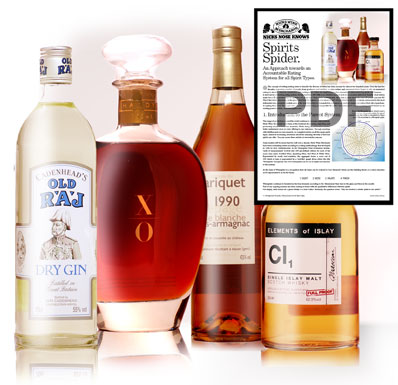 |
| Click the image above to download a PDF version of this article. |
An Approach Towards an Accountable Rating System for all Spirit Types
The concept of writing tasting notes to describe the flavour of wines has been around for almost two hundred years. Over the last few decades, a growing number of people, from producers and retailers, to wine writers and consumers have begun to rely on numerical ratings to describe wines in conjunction with tasting notes. Critics are employing similar conventions when reviewing spirits and liqueurs. A brief survey of existing rating systems reveals that they offer little or no detailed account as to how a score is arrived at. Exactly what criteria make for a 95 point beverage as against a 65 point one? Even more contentiously, why does a given beverage score 89 points and not 90? Was it the colour, the aroma or the palate that failed to impress, and in what respect? 100 point scales are now so firmly entrenched in the most influential wine and spirit markets around the world that they're demanded by consumers everywhere wanting to reduce their risk of purchase. Accepting these facts, this paper asks"Is an accountable rating system possible for spirits"and attempts to create a working model based on an existing parent system, www.winespider.com.
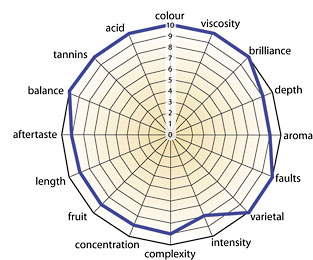 |
| Above: The Winespider System. A point score is arrived at from 160 possible criteria. For ease of comprehension, this is then re-calculated to a figure out of 100 and plotted on a Winespider graph. |
1. Introduction to the Parent System
The range of spirits from around the world continues to increase exponentially. Nicks Wine Merchants have been at the forefront discovering, importing and promoting many of these into Australia. While doing so, we found a need to better understand what we were offering to our customers. Through meetings with distillers and our own research, we compiled articles on all the major spirit types, aimed at increasing awareness about the amazing diversity of flavours spirits can offer. You can access these articles in the Resource Archives section of this site.
Some readers will be aware that for well over a decade, Nicks Wine Merchants have been evaluating wines according to a rating methodology first developed in 1994 by Nick Chlebnikowski. In the Winespider Wine Evaluation System, 'units of measurement' evolved into 160 pre-defined criteria for each of the main wine styles: Fortified Wine, Sparkling Wine, Red Wine & White Wine. Represented by words and numbers, the aggregate forms a score out of 100 which in turn is represented by a 'web-like' graph (from which the title 'Winespider' transpired).Click here for an in depth introduction to the system).
At the basis of Winespider is a recognition that all wines can be reduced to four 'elements' which are the building blocks of a wine's structure as it's represented to us by the brain:
1. SIGHT 2. NOSE 3. PALATE 4. FINISH
Winespider continues to breakdown the four elements according to the 'dimensions' they take in the glass and then in the mouth.
Part of our ongoing journey has been coming to terms with the qualitative differences between spirits.
Put simply, what makes for a great whisky or a bad vodka? Naturally, the question arose:"Why not construct a similar spider to rate spirits?"
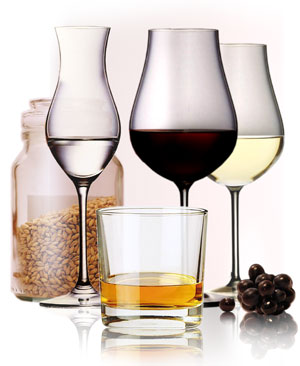 |
| With the exception of brandies in their various forms (the most famous examples being produced from grapes), most spirits are produced from grains (with the exception of rum and tequila). Each respective ingredient bestows different flavours. Even in the world of whisky, the use of differing proportions of grains in the mash such as wheat, barley or rye can have a huge impact on the final flavour profile. Combine this variable with the differing yeast strains, milling techniques, methods of distillation and maturation (column distillation vs pot still distillation, x-sherry oak vs x-Bourbon oak for example) and one begins to realise that the world of spirits is indeed very different, yet one which can be as varied, complex and bewildering as that of wine. |
2. How Spirits Differ from Wines.
Understanding how the production of spirits differs from wines, it quickly becomes apparent that it's necessary to develop evaluation criteria specific to spirits. Two elements that raise particular questions are the relevance of a spirit'sappearanceand the varying percentages ofalcoholin relation to spirit evaluation.
2a. Is Appearance Relevant?
All spirits enter the world with a water like appearance. They obtain colour by one or a combination of three ways:
1. time spent maturing in oak barrels.
2. by the addition of artificial colouring
3. by natural colour derived from ingredients used during production(as is the case with the world famous 'Chartreuse' and in certain absinthes). Producers may or may not divulge the source of colour in their products.
While the appearance and colour of a wine is universally deemed important to a wine's overall quality, the matter becomes ambiguous when applied to spirits.
The colour of a wood matured spirit may be a very general indicator of age (the longer a spirit is matured in barrels, the deeper its colour), however, neither a deep colour or venerable age necessarily imply a great drink. On the other hand, visual faults that would be negatives in wine evaluation can actually be positives in spirits. Clarity or cloudiness is one of these. Many whiskies are 'chill-filtered' prior to bottling, whereby the spirit's temperature is reduced close to freezing, in which state a number of 'impurities' can be filtered out. The main reason for this is that these 'impurities' cause the spirit to go very slightly cloudy when water (and especially ice) is added. Unfortunately, the 'impurities' are also flavour elements and would sometimes be better left in. A very coarse filtration may leave 'unattractive' particulate matter in the bottle or make the whisky appear slightly opaque, but enhance a whisky's overall flavour. Filtering per se is not always a bad thing. It can be a distiller's last opportunity to ameliorate a slightly imperfect product before bottling.
Other producers may also add caramel, a practice permitted in many countries in order to maintain consistency of colour from batch to batch or cater to market expectations.
At least one of Mexico's mass-produced mixto Gold tequilas, despite not being 100% agave and having additives including colouring, remains amongst the world's best-selling tequilas - a credit to their marketing though not necessarily to public taste.
With regard to other spirits, such as white rums or white tequilas, colour derived from brief maturation in barrels can be stripped out prior to bottling to enhance the perception of the 'purity' of the product.
While the colour, intensity and clarity of a spirit can make a valuable contribution to the consumer's aesthetic experience, the more one considers the relationship between a spirit's appearance and its quality, the more tenuous any connection between the two becomes.
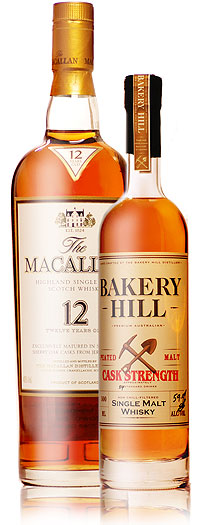 |
| The most obvious difference between wines and spirits is the significant disparity in alcohol volume (table wines rarely reach beyond 16% Alc./Vol. while spirits are generally bottled at around 40% Alc./Vol. or higher), so it's impossible to come to terms with spirit quality without giving special consideration to this criteria. An issue arises: Should natural strength or 'cask strength' spirits be penalised if they prickle or burn? Reduced strength spirits will offer a smoother mouthfeel but deliver less intensity of flavour. How do we reconcile these two opposites? |
2b. Accommodating Differing Degrees of Alcohol
Unlike wine, when tasting spirits, the sensation of alcohol begins with the nose and lips, but is usually described by tasters upon entry into the mouth. Once in the mouth there is a reflexive response involving an increased flow of saliva.
The contribution alcohol makes to the 'taste' of spirits is negligible (though some people are reported to perceive pure alcohol as slightly sweet or bitter). We actually perceive high degrees of alcohol in the mouth via the trigeminal nerve as a 'mouthfeel' sensation. These sensations belong to the sense of touch and can augment the overall perception of flavour. Tasters typically describe the sensation of alcohol using temperature and tactile descriptors such as 'silky', 'gently warming'; 'hot', 'very prickly'; 'painful', 'rough' or 'burning', depending on the alcoholic strength or purity of the sample.
'Temperature' sensations caused by alcohol belong to the 'false heat' category. The two main plants providing an analogous sensation are chilli peppers (those fruits of the capsicum plant that contain capsaicin) and black pepper. The term 'pungent' is also sometimes used to describe such sensations. The sensations caused by alcohol can carry through after the spirit has been swallowed, leaving behind what is often described as an 'after glow' or 'after burn' in the mouth, throat and oesophagus.
Despite alcohol itself being flavourless, it does seem to play a significant role in flavour delivery. An analogy could be formed with wine, in the way flavours are seemingly carried through the mouth on a 'wave' of acid and/or tannin. The relatively high alcohol in spirits seems to work in a similar fashion in disseminating flavour.
The upshot is that reducing the alcohol volume in spirits prior to bottling improves mouthfeel by minimising the alcohol sensation making for a 'smoother' drink, but can also reduce the intensity of flavour.
During trial tastings using the SpiritsSpider model, an issue arose when we encountered cask strength or high strength spirits. These are spirits bottled undiluted at 'natural strength'. There are numerous cask strength whiskies, brandies and several higher proof gins presently available and the category is growing. Typically, natural strength spirits are wood aged spirits. As these spirits mature in barrel, the proof reduces from around 70% Alc./Vol. following distillation, to 50-60% Alc./Vol. after 12-15 years of maturation in barrel depending on the environment.
Cask strength whiskies have developed a following partly because they offer the consumer the option of tasting whisky at its natural strength, arguably a more 'authentic' experience.
However, with the extra 'intensity' of flavour that comes with higher strengths, one has to take the good with the bad. The extreme alcohol can be quite prickly or even slightly painful. It can also anaesthetise the mouth, resulting in a less pleasurable experience. In our tasting trials, natural strength spirits often received a rating that was misrepresentative of the spirit's overall quality. In particular, the prickle/burn sensation was so strong that it compromised the final rating. To correct this imbalance, we felt it was necessary to accommodate natural strengths by adding a criteria, (see alcohol by reduction), the rationale being that spirits bottled at natural strength are at their purest expression and so should be recognised as such rather than penalised.
3. Ten Proposed Criteria for Spirits Evaluation
Leaving 'sight' aside, we're left to assess flavour and quality according to four elements: 'Nose', 'Palate', 'Alcohol' and 'Finish".
We propose these should be broken down into the following criteria:
a. Nose
(1) Aroma (2) Intensity
b. Palate
(3) Concentration (4) Complexity (5) Length
c. Alcohol
(6) By Mouthfeel (7) By Reduction
d. Finish
(8) Balance (9) Aftertaste (10) Faults
These criteria have not been arbitrarily selected, rather, each has a specific or general relationship to spirit quality. Criteria like 'aroma' or 'concentration' will be familiar to spirit lovers and intuitively accepted as given. The validity of judgements with either positive or negative hedonic connotations, such as the intensity of a pleasant sensation or of extreme bitterness, is also self evident, though grounds for the support of many such standards have been demonstrated in a section on www.nicks.com.au, 'The Senses'. We also know that there are characteristics in spirits that are universally agreed upon as faults - a painfully burning sensation or the sickening or off aromas associated with inferior distillate. Accounts of each of the proposed criteria follow below.
4. Explanation of the Criteria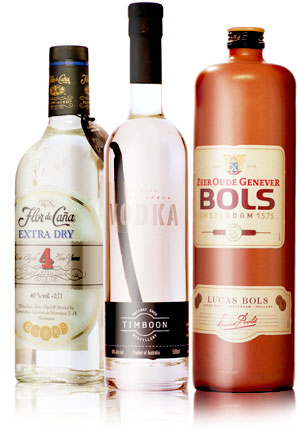
a. Nose
(1) Aroma- Aroma refers to the complexity and harmony of primary and/or secondary aromas. Each spirit has a primary group of aromas which will depend on the primary ingredient from which it is produced. Even the most delicate and 'purified' vodkas can retain traces of their original source. The ingredients themselves are subject to variables such as climate, soils, maturity etc. Secondary aromas are due to the distiller's influence and can include still size, construction and type, alcohol volume, fermentation treatment, types of yeast used, maturation regime, temperatures and other techniques. Typically wood matured spirits will have the most distinct secondary aromas, whereas in many white spirits, these will be almost indiscernible.
(2) Intensity- The intensity of aroma is self explanatory. This can also vary greatly depending on production variables.
b. Palate
Some spirit critics consider the nosing to be all important and will assess quality without tasting. While this may be viable in a professional context, the SpiritsSpider aims to inform the general public. In forty years of retail experience, we can confidently say that 99% of people who purchase spirits inevitably do so to drink them. (The remaining 1% are collectors who may or may not be relevant to this discussion). To laymen and enthusiasts alike, flavour is all important.
(3) Concentration- Concentration of flavour on the palate refers to both flavour and mouthfeel.
Influences on flavour concentration in spirits are firstly the type, then the shape and size of the still being used. Compared to 'continuous' or 'column stills' for example, which are used to produce lighter, more neutral spirits, copper pot stills typically produce a more profoundly flavoured and full bodied distillate. The height of the pot still has been identified as key in the 'lightness' or 'heaviness' of the spirit. For example, stills at Glenmorangie distillery in Scotland are some of the tallest in Scotland. The rationale is that only the finest, lightest spirits make it to the top. This translates to a lightness of body on the palate.
Primary ingredient comes next. Grains like wheat will tend to produce a lighter whisky than say barley or rye based whiskies. Similarly, potato or rye vodkas have a quite different mouthfeel to those produced from wheat.
Oak regime and maturation periods can also be major contributors to flavour concentration, with oak derived flavour characteristics of wood matured spirits said to contribute anything up to 60% of a spirit's final flavour.
(4) Complexity- In the book "Wines, Their sensory Evaluation" Maynard Amerine and Edward Roessler summarise complexity in a way that is totally satisfactory:"Like fine art, fine wines are made by impeccable workmanship plus a clear concept of the aesthetic standards by which they will be judged... The components must complement one another synergistically and excite our aesthetic appreciation. A great wine should have so many facets of quality that as we sample it we are continually finding new ones. It is this complexity that enables us to savor such a wine without losing our interest in it."The same applies to great spirits. An exceptionally complex spirit can leave a permanent impression that becomes a benchmark by which one identifies less complex examples. As a very general guide, the degree of complexity increases depending on the category of spirit. For example, from the relative simplicity of young, early to market oak matured spirits or indifferently produced white spirits, we move on to mass produced, but consistent bar standards, then on to more exciting examples including small batch-distilled products and so called 'super premiums', in which only the finest materials have been employed, with production overseen under the trained watch of distillers or master blenders who often devote a lifetime to perfecting their art. The most ambitious distillers go out of their way to create complex flavour profiles, employing the finest quality oak casks, the best primary ingredients, and production equipment often custom built to realise their vision. Creative production techniques are almost endless.
(5) Length- Length is the persistence with which flavours linger. To an extent, length and aftertaste work as a pair and a spirit may have length, but little aftertaste and vice-versa. The length of flavour is also related to the degree of concentration of palate flavours, so it is less likely that a spirit will have long palate length if it is delicate or watery in the mouth - though this is not a rule.
c. Alcohol
(6) Alcohol by Mouthfeel- As already mentioned, though alcohol is tasteless, we actually perceive high degrees of alcohol in the mouth via the trigeminal nerve as a 'mouthfeel' sensation. These sensations belong to the sense of touch and can augment the overall perception of flavour. Tasters typically describe the sensation of alcohol using temperature and tactile descriptors depending on the alcoholic strength or purity of the sample.
(7) Alcohol by Reduction- In this criteria, spirits of 50%+ Alc./Vol. are awarded 10 points by default. Spirits reduced to lower or standardised strengths either by time or the addition of water by the bottler receive a slightly lower ranking, but gain in mouthfeel (alcohol). Alcohol reduction improves mouthfeel by minimising the alcohol sensation making for a 'smoother' drink, but can also reduce the intensity of flavour. Essentially, this criteria makes allowances for higher strength spirits so they're are not unduly penalised.
d. Finish
(8) Balance- Balance refers to the juxtaposition of the spirit's component parts and of their harmony and ability to co-exist in a way that leads to the 'greatness' of a spirit. Primary flavours (those derived from fruit or grain for example), distillation and oak derived flavours, alcohol and texture should all be present in such a way as to create an overall impression of flavour harmony. If one component is present in a dominant manner, the likelihood will be that the spirit will be out of balance. 'Balance' or lack of, is also connected with a balance between the basic taste sensations (sweet, sour, bitter and umami) and is also concerned with mouthfeel sensations, such as degrees of heat (from alcohol) etc. working in combination with the basic taste sensations.
(9) Aftertaste / After-Flavour - Because taste relates to stimuli that are only experienced on the tongue, cheeks, lips, gums etc, whereas after-flavour refers to the summation of the total smell and taste experience, the latter term, though less commonly used, is more accurate and so preferred. After flavour is also often referred to as 'the farewell', yet another term used to describe the sensations that remain in the mouth after swallowing a spirit. Like length, after-flavour is measured in time.
(10) Faults- Serious faults are rare in commercial spirits nowadays. When encountered, these could be anything from cork taint to sulphury, stale, musty, soury, cheesy, vinegary, sickly, soapy aromas or flavours. A lack of varietal character also should be considered as a fault. This refers to the degree to which a spirit exhibits or fails to exhibit the traits intrinsic to its genre. For example, a Scotch whisky that could be mistaken for a rum is hardly desirable. A rye whiskey which is dominated by a sweet, corn, bourbon-like character (as opposed to a dry, fruity, spicy character) would be considered an unusual but poor expression of the genre. Lack of generic character can also be due to the spirit being swamped by secondary characteristics (e.g. oak) in which case the spirit has been over-matured at the cost of its individuality, or in the case of flavoured spirits, such as vodka, where the flavours are artificial or confected.
5. The Numbers
Standards for the Evaluation criteria of Spirits.
In order to arrive at a numerical rating, a hierarchy of sensations needs to be assembled under each sub category.
The following is an example of how criteria might be broken down in a transparent system for the evaluation of spirits:
Note - 1. Numerals preceding the descriptors denote the point score. 2. It's assumed that spirits are tasted from fresh bottles at room temperature using standard XL5 tasting glasses. 3. The term 'commercial' used throughout refers to an 'entry level' spirit - one that despite having no faults, thoroughly fails to excite the senses. We suggest a comparative tasting of a commercial spirit with a high quality product as an exercise to illustrate the difference.
Nose AROMA 10 Exceptionally complex with distinct primary and/or secondary 9 Good complexity with distinct primary and/or secondary 8 Moderate complexity with obvious primary and/or secondary 7 Simple and subdued primary and/or secondary 6 Almost Indiscernible primary and/or secondary 5 Neutral INTENSITY 10 Penetrating / Perfumed 9 Powerful 8 Aromatic, medium intensity 7 Subdued, light 6 Very frail, bland 5 Almost indiscernible Palate COMPLEXITY 10 Exceptional complexity / benchmark 9 Very complex 8 Moderate complexity 7 Commercial quality 6 Simple, one dimensional 5 Bland / insipid CONCENTRATION 10 Exceptionally concentrated / Mouthfilling 9 Concentrated, powerful 8 Moderate concentration 7 Subdued, light 6 Dilute 5 Thin / almost watery LENGTH 10 5-8 seconds 9 3-5 8 2-3 7 1-2 6 0-1 5 Neutral |
Alcohol ALCOHOL (BY MOUTHFEEL) 10 Exceptionally pure, silky, very gently warming 9 Pure, smooth, soft, warming 8 Clean, gentle tingle, warm 7 Mild prickle / slightly hot 6 Prickly / hot 5 Rough, burning ALCOHOL (BY REDUCTION) In this criteria, spirits of 50%+ Alc./Vol. are awarded 10 points by default. Spirits reduced to lower or standardised strengths either by time or the addition of water by the bottler receive a slightly lower ranking as follows: 10 50% + Alc./Vol. 9 46-49% 8 37-45% 7 Less than 37% Note: While reduced strength spirits may rate slightly lower in this criteria, they gain in the Alcohol by mouthfeel criteria. Finish BALANCE 10 Perfect balance / seamless integration & harmony 9 Well balanced 8 A little out of balance but acceptable 7 One or more components out of balance 6 One or more components strongly out of balance 5 Extreme imbalance / undrinkable LENGTH 10 20 + Length in seconds 9 10-20 8 5-10 7 3-5 6 1-3 5 Neutral FAULTS 10 No Faults Possible faults : Take 1 point off for each fault Take 2 points off for excessive faults. |
6. Discussion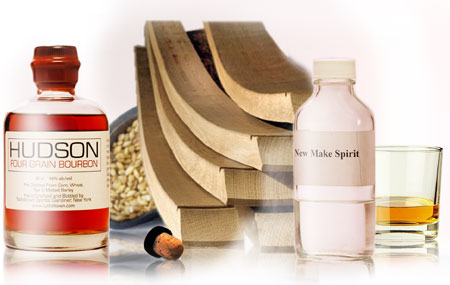
Is the System too Complicated?
Using so many criteria to evaluate a spirit might at first seem overwhelming.
However, we found that after a certain amount of experiment patterns begin to emerge. The most obvious of these is a considerable degree of repetition in one's observations and ratings. In fact, most of one's observations will remain confined to criteria in the 7 - 10 point range meaning that only a minority of spirits will ever rate below 75 points. Given the comprehensive advances in education, distillation, agriculture and science, fueled by international criticism and increased competition, this fact is not so surprising. In fact, spirit quality has increased to such an extent that serious faults or really ordinary spirits rarely make it to market nowadays.
Are Attempts to Create "Objective" Rating Systems Futile?
When evaluating spirits the impression we form is an experience that involves a synthesis of information from different senses, namely sight, smell, taste and touch (mouthfeel). By dividing the activity of tasting and focusing on its component parts, it is easy to forget that sensations from these parts must at some stage become unified then 're-presented', and it is the brain which provides us with the final, unified tasting experience. Some commentators have taken this observation to an extreme, arguing that, "The critic is actually describing a conscious representation of their interaction with the spirit, and therefore the score or rating is a property of that interaction and not of the beverage itself."
Here is an invitation to philosophy which we will not pursue too far. Suffice to realise that wines and spirits are natural beverages to which the mind contributes to it moulding forms, possibly as much as wines and spirits contribute by their stimuli. Our perception of flavour must be to a degree specific to ourselves, but it is unreasonable to think that when we judge a wine we are in fact examining ourselves and that the beverage itself has nothing at all to do with it.
Preferences exist, but there is an underlying commonality to be found among them. Indeed, what remains is the remarkable degree of consensus that exists amongst critics internationally. There is near-universal accord about what attributes a top wine or spirit should have. These include appealing aromatics, a distinctive flavour, a sense of harmony or balance in the mouth and a long finish.
While one could say that the critics tend to agree more than they disagree, absolute 'objectivity' is of course just as impossible to achieve in relation to spirit evaluation as it is in the evaluation of works of art, due to the differences and limitations in individual physiology, education and language. Proponents of 'cultural relativism' would argue this point to an extreme, however, we think it's going too far to suggest that we cannot point to, describe and evaluate the elements that make for a great spirit, in the same way we do point to and describe the elements that make for a great work of art.
We can move towards objectivity, insofar as this is possible, by working with an instrument of calibration. 'Intuitive' descriptors are replaced by offering a scale, a measure or marks for one's sensations from which a hierarchically structured vocabulary of sensations emerges. Spirits can be simple or complex, variable and changing. The criteria of the Spiritspider aim to reflect this reality.
Issues Concerning Ratings for Flavour Concentration
Like the intensity of aroma, the concentration of flavour is always a contentious issue when it comes to the numerical rating of wines and spirits. The arguments are familiar in the wine world and go something like this: While intensity of sensation is one of the physiological realities which the brain works with, 'intensity' alone is not only a reductive approach but a completely undemocratic way to determine the quality of a beverage. In the case of spirits, while whiskies from certain Islay distilleries in Scotland, noted for their assertive, peaty and intense flavour profile might consistently rate 90+ points, Lowland or Speyside whiskies that generally produce naturally lighter styles simply cannot.
This is an issue that is impossible to completely overcome if one is purely concerned with arriving at a numerical rating. We are seeking to describe beverages by means of a tasting note, numbers and a Spider web to provide a complete portrait - not just a number. Intensity of aroma and flavour play a role in high ratings (this is because we're hard wired for sensations, otherwise we'd all be happy drinking water), but so does balance, complexity and length. Using the SpiritsSpider, there's no reason why a given product couldn't rate in the high 90's despite scoring only 7 or 8 points for palate concentration.
Vodka is the only category of spirits that's deliberately and inherently light on aroma and flavour and so warrants special attention. While each brand has a unique, though subtle aroma, taste and mouthfeel, in order to rate these in a realistic manner, criteria for intensity of aroma and palate concentration in the SpiritsSpider may require a different weighting or definition.
Finally, the intention of this rating system is to assess like with like (vodkas against vodkas, tequilas against tequilas etc.), so a degree of experience and knowledge is assumed if one is tasting and rating products professionally. If one has no benchmarks for genres or little background knowledge, one's observations are not going to have a lot of value except perhaps to oneself.
Conclusion
We have approached the development of the SpiritSpider from the perspective of retailers.
For us, the importance of being able to communicate reliable information in order to recommend products and keep customers coming back is paramount. In our experience, an increasingly educated public demand transparency and accountability rather than arbitrarily arrived at ratings. By means of a tasting note, numbers and a SpiritSpider web, we try to provide a complete portrait of any given spirit. It's hoped that the structure of this system will assist tasters in their interpretation and use of terminology with regard to describing spirits and that the standards communicated here should help to assist students, consumers, industry personnel and researchers of different cultures to better communicate their responses to spirit quality.
We value any criticism or feedback you have to offer.
